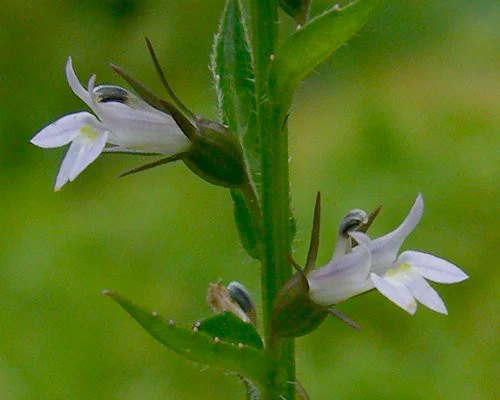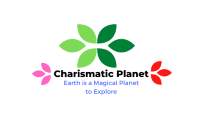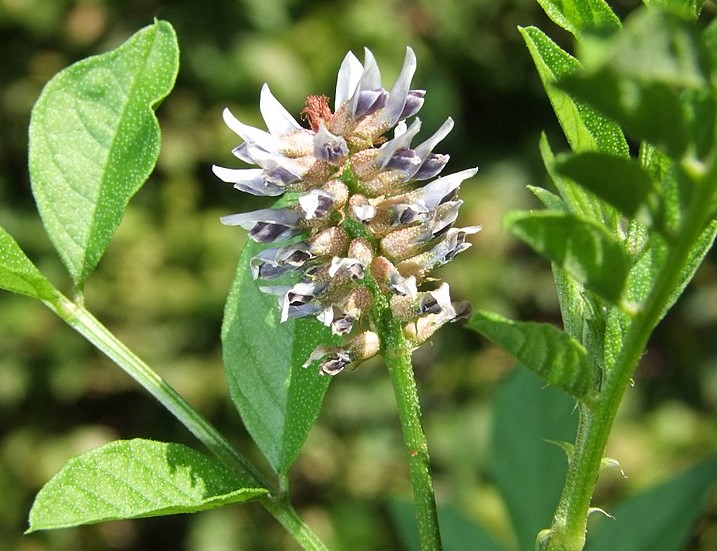Lobelia inflata, is a species of Lobelia native to eastern North America
COMMON NAMES: Lobelia has several other names, like Indian tobacco, emetic weed, poke weed, asthma weed, gagroot, and wild tobacco.
FEATURES: A genus of more than two hundred species of showy annual or perennial herbs or subshrubs of tropical and temperate regions, belonging to the bellflower family (Campanulaceae). This plant grows wild in most sections of the United States and is often known as Indian tobacco because of its taste.
However, it is in no way related to tobacco and does not contain nicotine or other poisonous properties. In all species the tubular, five-lobed corolla is irregular with a split on the upper side, an upper lip with two erect lobes, and a lower one with three spreading lobes. Lobelia flowers from July to November; the flowers are small and numerous, pale blue in this species, and a variety of red, yellow, white, or blue in others.
The leaves are alternate, ovate, lanceolate, veiny, and hairy; it has a fibrous root and an erect, angular, very hairy stem 6 inches to 3 feet in height. The fruit is a two-celled ovoid capsule containing numerous small brown seeds. More than twenty species attain considerable heights (up to 15 feet in the high mountains of Africa and Asia).
Some dwarf lobelia plants (Lobelia erinus) are cultivated as bedding plants or in hanging baskets. The proper time for gathering is from the last of July to the middle of October. The plant should be dried in the shade and then preserved in packages or covered vessels, especially if reduced to powder.
The people of New England used it long before the time of Samuel Thompson, its assumed discoverer. Contains various alkaloids, lobeline, and others. The milky juice is very poisonous to livestock. The whole plant is active, and the stalks are used indiscriminately with the leaves by those who are better acquainted with its properties. The root is supposed to be more energetic, medicinally, than any other part of the plant.
MEDICINAL PARTS: Leaves, stems, and root.
SOLVENT: Water.
BODILY INFLUENCE: Emetic, stimulant, antispasmodic, expectorant, diaphoretic, relaxant, nauseant, sedative (secondary cathartic and astringent).
USES: Native Americans used the root and plant of red lobelia for syphilis and for expelling or destroying intestinal worms. The Shoshones made a tea of lobelia for use as an emetic and physic. Lobelia is dual in its activities; it is a relaxant and a stimulant. In small doses it stimulates; in large doses it relaxes. Lobelia is one of the most valuable herbs used in botanic practice.
Much has been written regarding whether this herb is poisonous, but experience suggests that it is an antidote to poison, whether of animal or vegetable variety. Lobelia is an antidote, chiefly used as an emetic, and may be prescribed whenever one is indicated. It seems strange that though lobelia is an excellent emetic, when given in small doses for irritable stomach, it will stop spasmodic vomition.
It tends to remove obstructions from every part of the system and is felt even to the ends of the toes. It not only cleanses the stomach but also exercises a beneficial influence over every part of the body. It is very diffusible, however, and needs to be used with capsicum or some other permanent stimulant to keep alive the blaze that it has kindled. The action is different on different people, and given alone, lobelia cannot cure but is very beneficial if given in association with other measures.
For irritable conditions of the nervous system, it is invaluable and can be relied upon in ordinary convulsions; it should be combined with some nervine, such as lady’s slipper (Cypripedium pubescens). As an expectorant, it may be used to great advantage in small doses for colds, along with the decided pulmonary agent coltsfoot (Tussilago farfara). For spasmodic croup it is invaluable; it has also gained a great reputation for asthma along with nervines such as blue cohosh (Caulophyllum thalictroides) and skullcap (Scutellaria laterifolia). It has been successfully used in lockjaw. Large doses will relax the whole system completely so that even the smallest muscles cannot be used.
This condition is termed the “alarm,” and Dr. J. H. Greer tells us “it is uncomfortable although not dangerous, unless poisons should be administered, which are in this condition quickly absorbed.” This is not advisable administration for the lay public, however. Lobelia, in fevers, is suited for phrenitis, meningitis, pneumonia, pleurisy, hepatitis, peritonitis, nephritis, and periostitis. This is not a continually used agent; the intention is to clean out, clean up, and keep clean the many areas of congestion of the vertebral arteries to pave the way for the use of other remedial nourishment. In bronchial and pulmonary complaints its action is speedily and wonderfully beneficial. Can also be used to subdue spasms, epilepsy, tetanus, cramps, hysteria, chorea, and convulsions.
Give first of all an infusion of catnip (Nepeta) to the bowels, which of itself will do much to relieve the brain and can be administered even when the patient is delirious. Give lobelia in small quantities as the case may require, but clean out the waste material and relieve the locked-up condition of the body that is causing the trouble. It is a temporary relief in any case when administered internally; if not used with great skill and caution, it may do as much harm as good.
CAUTION: Never administer lobelia where the system is relaxed or when there is congestion.
DOSE: 1 ounce of the herb to 1 pint of boiling water makes an ordinary infusion, to be administered in tablespoonful doses every hour or half-hour. A weak infusion given in teaspoonful doses every 10 minutes (termed “broken doses”) will thoroughly relax the muscular system and prove a great aid in reducing fractures and dislocations, especially if a cloth soaked in the warm infusion is applied over the seat of the difficulty. For convulsions, injections of the herb as an infusion are best.
EXTERNALLY: A salve or tincture of lobelia and other soothing barks and roots can be employed for inflammations and swellings; it is not recommended for indolent ulcers or dark sores.
HOMEOPATHIC CLINICAL: Tincture of fresh plant, trituration of leaves only for alcoholism, alopecia, amenorrhea, angina pectoris, asthma, cardialgia, cough, croup, deafness, debility, diarrhea, dysmenorrhea, dyspepsia, emphysema, faintness, gallstones, gastralgia, hemorrhoidal discharge, hay asthma, heart (affections of), hysteria, meningeal headaches, Millar’s asthma, morning sickness (of drunkards, of pregnancy), morphia habit, palpitation, pleurisy, psoriasis, rigid as seborrhea, shoulders (pain in), tea (effects of), urethra (stricture of), vagina (serious discharge from), vomiting (of pregnancy), wens, and whooping cough.
RUSSIAN EXPERIENCE: The Russians pronounce “lobelia” the same as do the Americans. Lobelia is popular as both a commercial and industrial cultivation in central Russia—Krasnodar, Voronezh, Moscow, and Byelorussia. The use of folk medicine is not indicated in the available literature.
Clinically: The whole plant is used for many critical conditions. The all-important adrenal glands are aroused by stimulating adrenalin into the bloodstream; it is not accumulative and can be used repeatedly. The respiratory area is soon relieved of symptoms of asthma and spasmodic conditions. It is useful in cases where first aid is needed when shocked by electricity or sun- and heatstroke, to force vomiting when poisoned by narcotics, food, or medicine, in carbon monoxide poisoning, and in infections.







